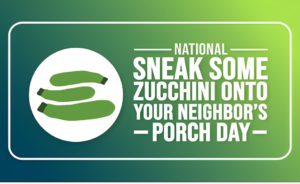In today’s fast-paced digital landscape, consumers are constantly connected and seeking instant gratification. Micro-moments, defined as brief and intent-driven interactions, play a pivotal role in shaping customer behavior and influencing purchasing decisions. For e-commerce businesses, recognizing and capitalizing on these micro-moments can be the key to converting intent into action and driving success in the competitive online marketplace.
This article aims to explore the concept of micro-moments in e-commerce, their significance, and how businesses can leverage them to create seamless and personalized shopping experiences that ultimately lead to higher conversions. By understanding the power of micro-moments and implementing strategies to harness their potential, businesses can stay ahead in the race for consumer attention and loyalty.
1. Introduction: Understanding Micro-Moments and their Impact on E-commerce
Defining Micro-Moments in the E-commerce Landscape
In today’s fast-paced digital world, micro-moments have become a common occurrence in our daily lives. But what exactly are micro-moments, and why are they important for e-commerce success?
Micro-moments are those tiny moments when we instinctively turn to our smartphones or computers to seek information, make a purchase, or even just entertain ourselves. They are the split-second decisions that shape our online experiences. Think of them as the “aha” moments that occur when we have a need or desire and our immediate reaction is to grab our devices and find a solution.
The Significance of Micro-Moments for E-commerce Success
For e-commerce businesses, recognizing and capitalizing on these micro-moments can be a game-changer. Why? Because micro-moments are often fueled by high intent. When a user turns to their device to search for a product or service, they are already primed to take action. They are in the perfect mindset to convert, and it’s up to e-commerce businesses to meet their needs in those crucial moments.
By understanding and optimizing for micro-moments, e-commerce businesses can increase their chances of converting intent into action. This means being there with relevant information, seamless experiences, and enticing offers when users need them the most.
2. The Power of Intent: Exploring the Role of Micro-Moments in Driving Conversions
Understanding User Intent and its Influence on E-commerce
Intent is the driving force behind micro-moments. When users are actively searching for information or a specific product, they have a clear goal in mind. They are motivated to find a solution quickly and efficiently.
In the e-commerce world, understanding user intent is critical. By analyzing search queries, browsing patterns, and other behavioral cues, businesses can gain insights into what users are looking for and tailor their offerings accordingly. This enables them to deliver relevant content and personalized experiences that resonate with users’ intent, ultimately boosting conversions.
The Psychology Behind Micro-Moments and Purchase Decisions
Micro-moments tap into our psychology and decision-making processes. When faced with a need or desire, our brains quickly evaluate options and make snap judgments. In these moments, factors like convenience, trust, and social proof play a significant role in shaping our purchase decisions.
E-commerce businesses can leverage this psychology by presenting compelling product descriptions, showcasing positive reviews, and offering seamless checkout experiences. By addressing users’ needs and concerns in these brief moments, businesses can establish trust and increase the likelihood of conversion.
3. Mapping the Customer Journey: Identifying Key Micro-Moments in the E-commerce Funnel
Awareness Stage: Micro-Moments that Trigger Interest and Discovery
The customer journey comprises several stages, and each stage presents unique micro-moments to engage users. In the awareness stage, micro-moments arise when users are seeking inspiration or exploring options. Businesses can capture these moments by providing informative blog posts, social media content, or targeted ads that showcase their products or services.
Consideration Stage: Micro-Moments that Encourage Evaluation and Comparison
During the consideration stage, users are actively evaluating different options. This is when businesses can shine by offering detailed product comparisons, customer testimonials, or interactive tools that help users make informed decisions. By being present in these micro-moments, businesses can influence the evaluation process and increase their chances of standing out.
Decision Stage: Micro-Moments that Prompt Conversion and Purchase
The decision stage is where the magic happens – the moment when a user converts into a customer. To maximize conversions during this micro-moment, e-commerce businesses should provide seamless checkout experiences, limited-time offers, or personalized recommendations based on user’s preferences. By removing any friction and adding incentives, businesses can nudge users toward making that final decision to purchase.
4. Mobile Optimization: Capitalizing on Micro-Moments for Seamless Shopping Experiences
The Rise of Mobile Commerce and Micro-Moments
With the rise of smartphones, micro-moments, and e-commerce have become synonymous. Mobile devices have become our constant companions, always at hand to satisfy our needs or whims. E-commerce businesses must adapt to this mobile-centric landscape and ensure that their websites and experiences are optimized for seamless mobile shopping.
Responsive Design and Mobile-Friendly Interfaces
Responsive design is crucial for delivering positive micro-moments on mobile devices. Websites must be easy to navigate, images should load quickly, and checkout processes should be streamlined for smaller screens. By prioritizing mobile-friendly interfaces, businesses can meet users’ needs in those precious micro-moments and prevent frustration that may lead to abandoned carts.
Mobile Apps and Micro-Moment Integration
Creating a dedicated mobile app can further enhance micro-moments for e-commerce businesses. Apps provide a more personalized and tailored experience, allowing businesses to send push notifications, offer exclusive discounts, or provide seamless one-click purchases. By integrating micro-moments into their mobile apps, businesses can create a seamless shopping experience that keeps users engaged and converts intent into action.
5. Personalization and Customization: Leveraging Micro-Moments to Tailor the E-commerce Experience
In the world of e-commerce, personalization is key. Customers want to feel like the products and services they come across are tailored specifically to their needs. This is where micro-moments come into play. By understanding and capitalizing on these brief moments of intent, businesses can create personalized and customized experiences that resonate with their customers.
Collecting and Analyzing User Data for Personalization
To personalize the e-commerce experience, businesses need to collect and analyze user data. This can include information such as browsing history, purchase behavior, and demographic details. By understanding what customers are interested in and how they interact with the website, businesses can deliver tailored recommendations and content that align with their preferences.
Dynamic Content and Product Recommendations in Micro-Moments
Dynamic content and product recommendations are powerful tools for leveraging micro-moments. By analyzing user data in real time, businesses can display relevant content and suggest products that align with the customer’s intent. For example, if a customer visits a website searching for running shoes, the e-commerce platform can showcase running shoe options, along with related accessories or articles on running tips.
Creating Personalized Micro-Moment Experiences
To create personalized micro-moment experiences, businesses should focus on delivering relevant content, personalized recommendations, and tailored offers. By understanding what customers are looking for at that specific moment, businesses can provide a seamless and delightful experience that increases the likelihood of conversion. Whether it’s sending targeted email campaigns or displaying personalized ads, the goal is to make customers feel like the e-commerce platform understands their needs and caters to their preferences.
6. From Discovery to Purchase: Strategies for Converting Intent into Action in Micro-Moments
Micro-moments are not just about capturing customer intent; they are about converting that intent into action. Here are some strategies to optimize the micro-moment journey from discovery to purchase.
Optimizing Product Listings for Micro-Moment Conversions
When customers are in the discovery phase, it’s crucial to showcase products in the most compelling way possible. Clear and concise product descriptions, high-quality images, and user-generated reviews can all contribute to a seamless micro-moment experience. By providing all the information customers need to make a decision, businesses can increase the likelihood of conversion.
Streamlining Checkout Processes for Quick and Easy Purchases
In micro-moments, customers want instant gratification. If the checkout process is long and complicated, it can lead to abandoned carts and frustrated customers. Streamlining the checkout process by offering guest checkouts, auto-fill features, and multiple payment options can make the purchasing experience quick and hassle-free, increasing the chances of conversion.
Incentives and Discounts to Encourage Micro-Moment Conversions
Who doesn’t love a good deal? Offering incentives and discounts during micro-moments can be a powerful motivator for customers to take action. Whether it’s a limited-time discount code or free shipping for a certain purchase amount, these incentives create a sense of urgency and can nudge customers toward making a purchase decision in that specific micro-moment.
7. Analytics and Measurement: Tracking and Optimizing Micro-Moments for E-commerce Success
To truly harness the power of micro-moments, businesses need to measure and optimize their strategies. Here’s how to track and optimize micro-moments for e-commerce success.
Selecting Key Metrics for Micro-Moment Analysis
When tracking micro-moments, it’s essential to focus on key metrics that align with your business goals. Metrics such as conversion rate, click-through rate, and bounce rate can provide insights into customer behavior and the effectiveness of your micro-moment strategies. By analyzing these metrics, businesses can identify areas for improvement and optimize their strategies accordingly.
Tools and Techniques for Tracking Micro-Moments
To track micro-moments, businesses can utilize various tools and techniques. Web analytics platforms like Google Analytics can provide valuable data on user behavior and interactions. Heatmap tools can offer insights into where customers are clicking and scrolling on your website, helping identify areas of interest. Additionally, surveys and feedback forms can provide qualitative data, giving businesses a deeper understanding of customer needs and preferences.
Iterative Testing and Optimization for Enhanced Micro-Moment Conversions
Optimizing micro-moments is an ongoing process. By conducting iterative testing, businesses can experiment with different strategies and measure their impact. A/B testing, where two versions of a webpage or email are compared, can help identify the most effective elements for micro-moment conversions. By continuously refining and optimizing strategies, businesses can enhance the e-commerce experience and drive greater success in micro-moments.In conclusion, as the e-commerce landscape continues to evolve, understanding and leveraging micro-moments has become essential for businesses to thrive. By recognizing the power of intent-driven interactions and strategically aligning their efforts to cater to these moments, e-commerce companies can create seamless and personalized experiences that convert intent into action. With mobile optimization, personalization, and a deep understanding of the customer journey, businesses can pave the way for success in the dynamic world of e-commerce. By capitalizing on micro-moments, businesses can not only attract and retain customers but also drive conversions and achieve long-term growth.
FAQ
Q: What exactly are micro-moments in e-commerce?
Micro-moments in e-commerce refer to brief and intent-driven interactions that consumers have with digital platforms or devices, typically through mobile devices. These moments can happen anytime and anywhere, often influenced by a specific need or desire. They are crucial opportunities for businesses to connect with potential customers, provide relevant information, and guide them toward making a purchase.
Q: How can businesses identify and leverage micro-moments in their e-commerce strategies?
Identifying micro-moments requires a deep understanding of the customer journey and the various touchpoints where these moments occur. By analyzing user data, businesses can identify patterns and trends that reveal key micro-moments. Leveraging these moments involves optimizing mobile experiences, personalizing content and recommendations, streamlining the purchasing process, and strategically targeting consumers during key decision-making stages.
Q: Are micro-moments exclusive to mobile devices?
Although micro-moments are often associated with mobile devices due to their pervasive nature, they can occur across various digital platforms. Desktops, tablets, and even smart home devices can all become potential touchpoints for micro-moments. Businesses need to optimize their online presence and experiences across all devices to effectively leverage micro-moments and cater to diverse consumer behaviors.
Q: How can businesses measure the impact of micro-moments on their e-commerce success?
Measuring the impact of micro-moments requires tracking and analyzing relevant metrics. Key performance indicators (KPIs) such as conversion rates, click-through rates, bounce rates, and time spent on site can provide insights into the effectiveness of micro-moment strategies. Additionally, businesses can leverage analytics tools and user behavior tracking to gain a deeper understanding of how micro-moments influence customer behavior and drive conversions.







